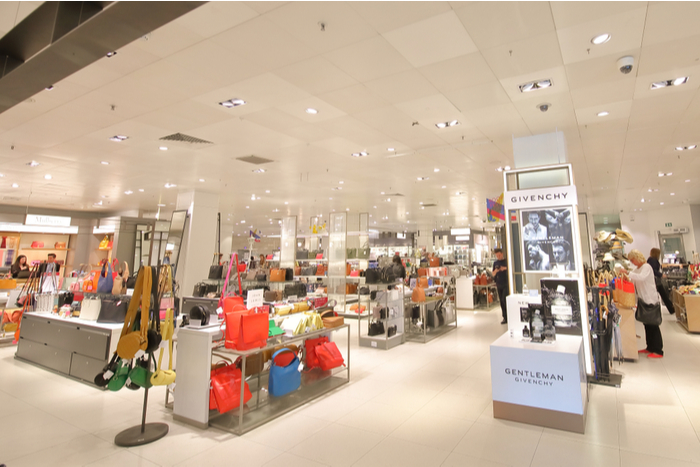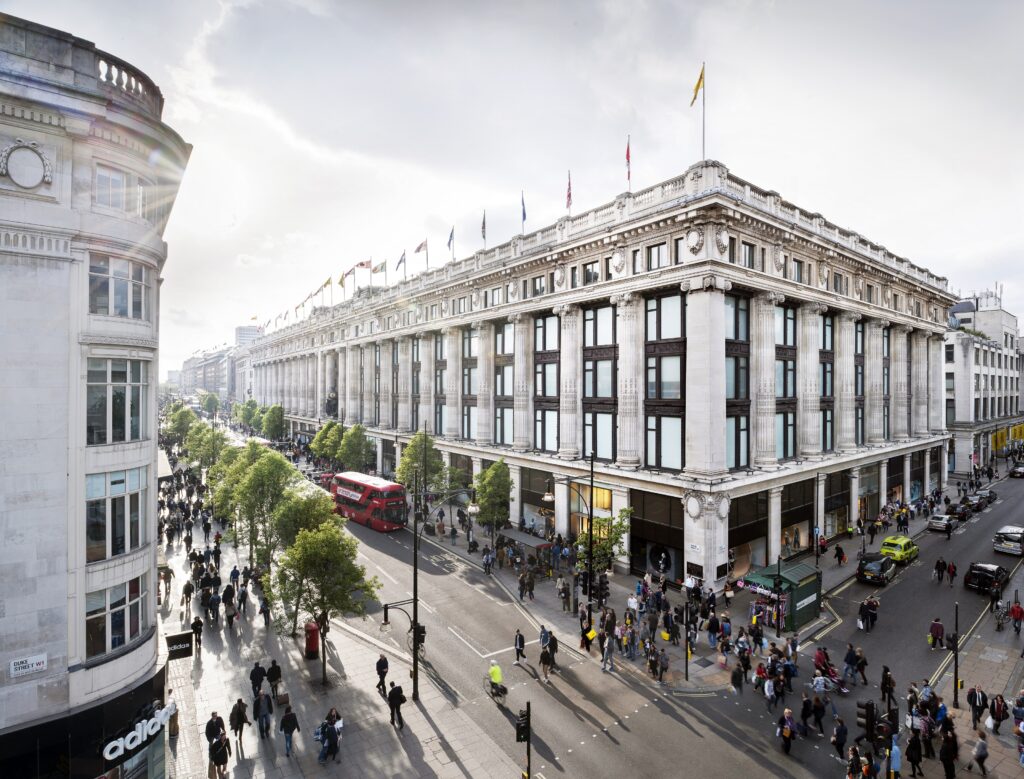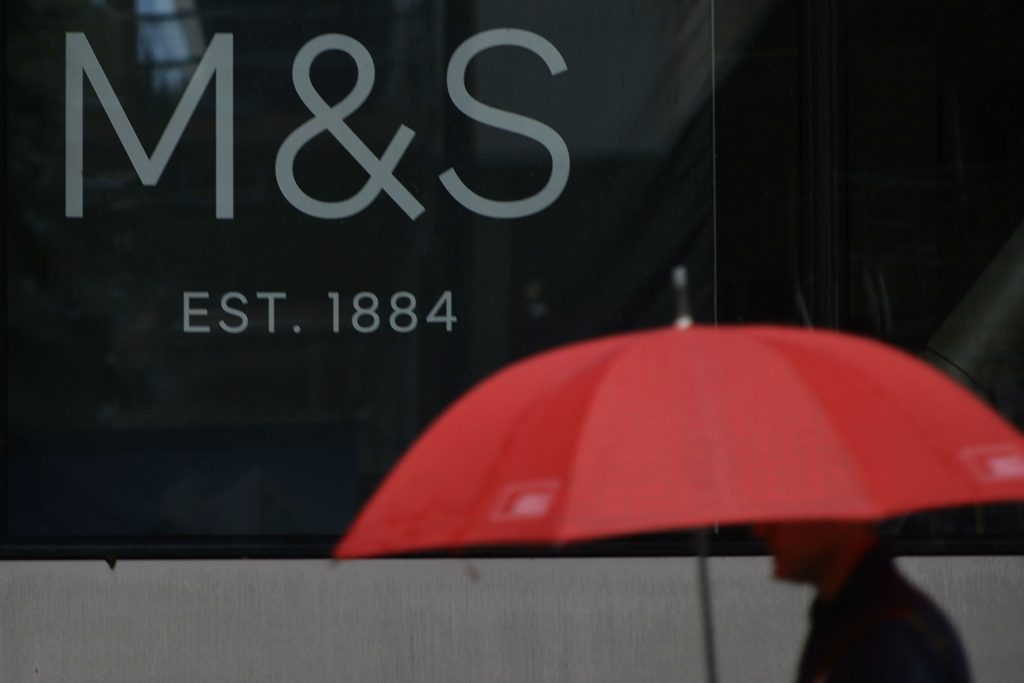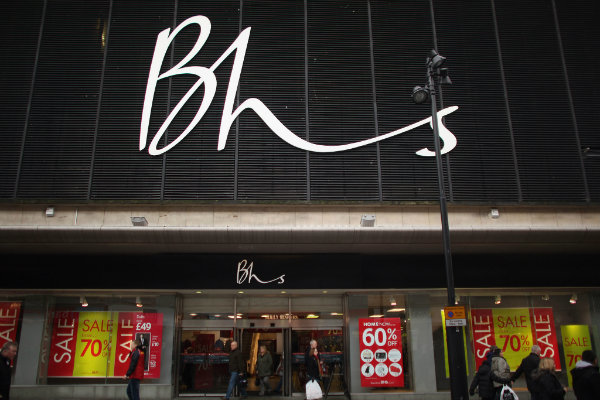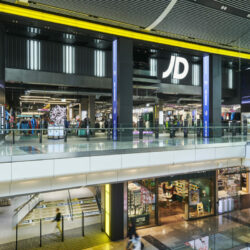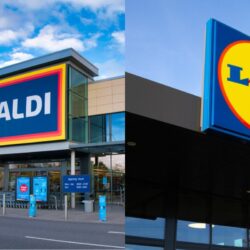It’s no secret that department stores in the UK such as House of Fraser, John Lewis and Marks & Spencer have been faltering for some time now, battling numerous fronts.
So much so that research by commercial property information specialist CoStar Group earlier this year found that 83 per cent of UK department stores have been lost in the five years since the collapse of BHS.
The data revealed that major department store chains such as BHS, Debenhams, House of Fraser and John Lewis had 467 branches five years ago – but following the collapse of BHS, closure of Debenhams and some restructures undertaken by John Lewis and House of Fraser, only 79 remain.
The decline of department stores does not come as a surprise considering that a number of department stores are struggling to make a profit – many exacerbated by Covid-19.
Harrods reported a colossal loss of £68 million earlier this month after Covid lockdowns halved its revenues last year.
The luxury department store reduced its number of staff by 145 to just under 4000 and ditched a dividend to its Qatari owners in a year that has seen its sales drop due to store closures.
Harrods said its import costs had increased by £500 million as a result of extra administration and taxes, while the removal of duty-free shopping for travellers in January this year was likely to hit trade from tourists.

Meanwhile, the Weston family – owners of fellow luxury department store Selfridges’ – have taken the retail sector by surprise after considering offloading Selfridges for £4 billion.
Selling department stores at a time when they are struggling seems an unusual decision, but this could mean that there is still a demand and hope for tourism to return to pre-pandemic levels.
Despite an overall gloomy outlook for department stores, it appears that authorities are investing hundreds of millions of pounds into units in an effort to attract shoppers.
House of Fraser recently announced that its store on London’s Oxford Street will be revamped with £100 million investment after receiving planning permission from Westminster City Council’s Planning Committee.
The large scale development will see the building given an extensive refurbishment to fix its exterior and convert its upper floors into office space. It will also receive a top floor restaurant with 360 degree views of the surrounding area.
As well as offices, the building will feature space for a gym and basement pool alongside existing retail space.
Many businesses are evidently scurrying to find ways to make use of department store space, while others are introducing department stores in different formats.
The “world’s oldest department store” Bennetts, which closed in 2019, announced plans earlier this month that it will reopen in Derby as a pop-up store.
The shop, branded as Seasons by Bennetts, is due to open on Sadler Gate. The 285-year-old department store was bought out of administration by local businessman Paul Hurst.
Meanwhile, both John Lewis and Marks & Spencer revealed plans in March to downsize their stores and convert the unused spaces into offices.
Gavin Harrison, UK sales manager at warehouse robotics company Element Logic, said authorities are not only investing in department stores specifically, but the whole retail environment in general.
“They are investing because they know how key high street retail is to the UK economy in terms of jobs, not only in the store itself but also in the wider supply chain supporting it,” he said.
“By comparison, the ecommerce environment doesn’t require this level of investment, since it’s already booming as a result of the pandemic.
“The pandemic has made people reflect on the importance of retail shopping as a social experience. But there needs to be an increased investment in the quality of the high street experience for the consumer to make it more attractive and worthwhile, since on a cost-only basis ecommerce will always win out.”
Harrison added that refurbishments that are primarily for aesthetic purposes won’t be enough.
“Bringing customers back to department stores will require an enhanced retail experience”
“Bringing customers back to department stores will require an enhanced retail experience above and beyond what they’re already used to,” he said.
“Using extra space within department stores for online order fulfilment and collection would be another way to naturally increase footfall and this could lead to upselling and cross-selling opportunities.”
Melissa Minkow, retail strategy director at digital consultancy CI&T argued that online channels shouldn’t be considered alternatives to brick-and-mortar, but the two should work together and be built up in ways that support a hybrid strategy.
“If department stores reinvent themselves drastically and in ways that are relevant to how consumers’ shopping behaviours have evolved, there’s a large chance they can lure shoppers back,” she told Retail Gazette.
“Retail is a place where, if brands align to what consumers want, despite a troubled past, they can certainly bounce back.
“Department stores do not need to be as large physically as they once were, but a brick-and-mortar presence is still a smart idea. [They] can take up less space but host only the categories consumers prefer to shop in person, with expert associates.
“An alternative route would be to turn these spaces into fulfilment centres. There are a variety of options for department retailers to go in order to reinvent themselves.”
Meanwhile, Mark Leeson, operations director of property and design consultancy McBains, said department stores will have to reinvent themselves to be experiential – a place where physical and digital worlds meet – if they are to survive.
“They shouldn’t necessarily focus on their online channels at the expense of the physical experience as there is still a place for physical retail,” he said.
“Many local independent shops, for example, flourished, in lockdown as they adapted to deliver a more personalised service.”
Across the UK, the sprawl of retail space left over by department stores has arguably become too much for the sector to manage. One of the main challenges facing the industry now is deciding how to reduce the amount of empty retail space.
Repurposing is already happening to some extent – although it is important to note this is presently only taking place on a small scale.
For investors, while there is no failsafe blueprint for success, the appropriate repurposing of assets will lead to increased investment value. A decrease in quantum of retail, and enhancement of the remaining supply, should increase investor demand.
With a heavy oversupply of retail space across the UK, as well as a huge increase in online spending, retailers no doubt have a tough job of injecting life into underutilised retail space – even after Covid-19.
Click here to sign up to Retail Gazette‘s free daily email newsletter

